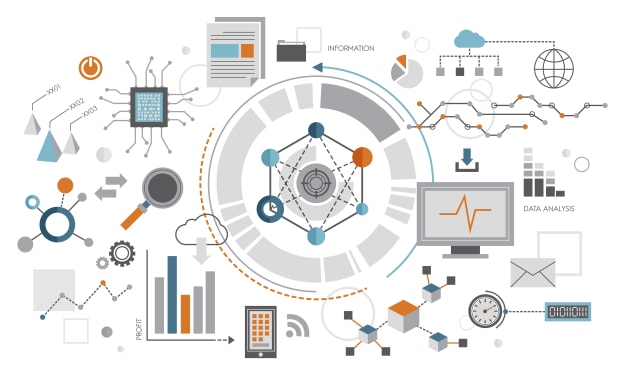10 Revolutionary Technologies
Where would the human race be without mobile phones, organ transplants, etc...
So many new technologies have appeared in the 100 years that it's impossible to list them all. But these 10 high-tech breakthroughs stand out over the last 100 years because they've revolutionized the way Humans live. We look back at where they started, as well as where they've reached today.
10.Robots and artificial intelligence.
The term "Robot" was coined by Czechoslovakian playwright Karel Capek in 1920 - but the first real industrial robot built was in 1954 by George Devol. Six years later, MIT(Massachusetts Institute of Technology) opened its first Artificial Intelligence Laboratory in a quest to Robotically mimic human thinking as well as hand movements. Today, while more than 8 million U.S. airline flights are scheduled a year, guided, and flown with the superhuman assistance of advanced software and robots machines assembling products better, faster, and often cheaper than manual laborers. Still, some people are skeptical about how the machines might leave people without a purpose.
9.Electronic funds transfer.
The Reserve Bank of San Francisco set up the first paperless transfer system with their Los Angeles branch in 1972. Ten years in the future and instantaneous transfers of funds in different currencies between banks, insurance companies, and other financially set up institutions had become common. The real appeal of EFT today is it's easy to use function right down to the individual level where you get to grab cash from your bank account anywhere in the world, and use PayPal or other E-wallets(Netteller, skrill, etc.) to buy and sell stuff online without sending money or cheque through the physical mail - it became that simple.
8.Organ Transplant.
In 1954, Dr. Joseph E. Murray extracted the kidney from one human patient and implanted it in another. The recipient's system accepted the kidney as its own rather than rejecting it as a foreign body. It was rather more than just skillful surgery but because Dr. Murray had chosen identical twins, Richard Herrick who was terminally ill, and his brother Ronald Herrick, in hopes that their genetic similarity would reduce the likelihood of Richard's body rejecting Ronald's Kidney. Soon afterward, though, many researchers and institutions developed drugs that could hold a transplant recipient's immune system long enough for the new organ to become incorporated and settle into its new body. Today, some 39,000 Americans a year receive a new heart, kidney, liver, lung, pancreas, or intestine and more than 100,000 across the globe - and also a new lease on life.
7.Nuclear power.
The world's first atomic powerplant was instilled and activated by the Queen at Calder hall in 1956, nations started seeing nuclear reactors as cheap and pollution-free energy. But an unfortunate partial meltdown in 1979 at the Three Mile Island reactor in Pennsylvania led Americans to see nuclear-armed missiles as safe power. Nonetheless, there are nearly 440 active nuclear plants in around 30 countries that produce 10% of the world's electricity - second only to coal as a source of power - and have been steadily increasing their capacity. What will the next 50 years bring to the human world?
6.Space Flight.
Humans from 50 years ago would be disappointed to learn humans never went further than the Moon - no Mars colony, no high-speed spaceships touching the speed of light. But the space race between the nations that dominated the psyche(and a good chunk of the budget) in the '60s and '70s pushed the development of hundreds of enabling technologies, including synthetic fibers, self-healing materials, and integrated computer circuits, necessary for men to fly to the Moon and back. And the astronauts brought back a lesson from space: "We saw the earth the size of a penny, and we realized then that there is only one home. We are all a family."
5. Mobile phones.
The idea to communicate through cell phones dates back to 1947, but the first call was made from the roadside outside the Manhattan Hilton in 1973 by Martin Cooper, a Motorola researcher who rang up his company rival at AT&T Bell Labs to test the new phone. forty-seven years later, more than 3.8 billion Humans own a smartphone, and with access to the internet, its become a basic need.
4. Digital media.
Since the release of photoshop 1.0 in 1990, there’s been a saying that “the camera always tells the truth”. The ability to customize the digitized audio, pictures, videos, and text led even a rookie to mend reality-or adjust it from scratch. A model’s wrinkles, a singer's bad pitch, or a blown-out scene in a video can be fixed as easily as a spelling error. As we know, digital media can be copied multiple levels of time for free, can be sent around the world in seconds, and stored permanently. It definitely worries the video and music industry, but how can you contain an unleashed monster without killing it?
3.Personal computers.
Long before the versions of computers, we see today, the first personal computer was built by MITS in 1974 called the Altair, which turned heads and made people start seeing computers as an office automation tool rather than a hobbyist's gadget. later in 1984 Apple launched a 'mini-computer' the size of a washing machine and which required an air-conditioned room. But the trained technicians knew that the computer was cool, and could be used to play games, solve a complex equation and connect with friends across the country and still look busy.
2. Genetic engineering.
Many know Watson and Crick, who unraveled the secret of DNA in 1953. But have you heard of Boyer and Cohen, the first ones who constructed organisms with combined DNA from different species in 1973? They inserted toad genes into a bacteria that then replicated itself over and over, passing the toad's genetic code down through generations of bacteria. Forty years later, an estimated 75 percent of processed foods contain genetically modified ingredients, such as soybeans or corn engineered for higher crop yields. Of course, the much bigger potential - good and bad - is in engineering humans. It might prevent birth defects and diseases later in life. But the side effects could be disastrous and unknown. If I may ask, Is there an ethical way to beta-test human beings? Hmm...
1.The Internet.
This one seems like an obvious choice, but no two people will agree on the same point why the internet is so important. The internet has and always be a curse for anyone who has a secret, but still being the world's largest library, social club, research medium, a global news channel, and all that while still being the most affordable mass medium. Today more than 4 Billion people use the Internet, but it remains to be seen whether the connections to one another will transform us, or prove that we'll never change.







Comments
There are no comments for this story
Be the first to respond and start the conversation.